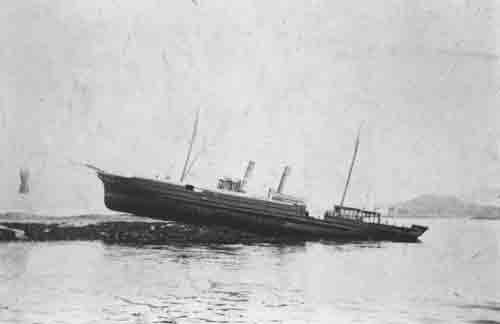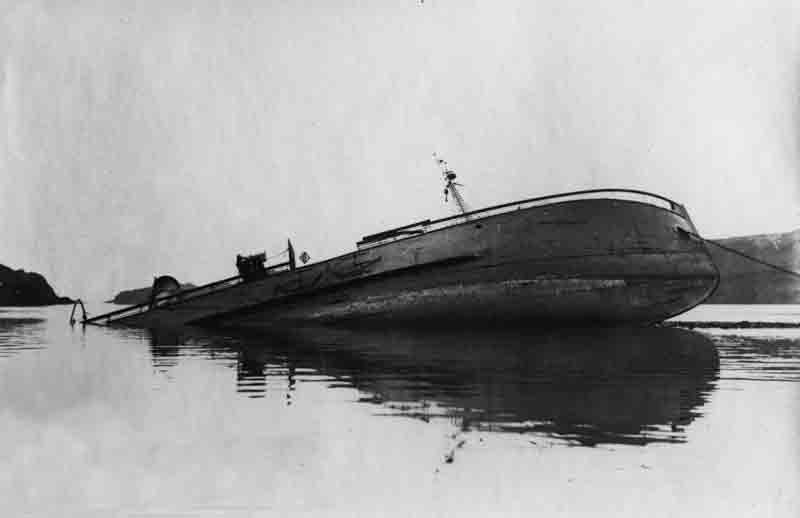The Mountaineer was an iron paddlesteamer constructed at the Cessnock Bank yard of J & G Thomson, Govan (Yard No 3) and launched on 29th May 1852. She measured 195.6′ x 18.2′ x 8.2′ and her tonnage was 190 gross tons, 110 net tons. She was launched with a 50 nominal horse power engine by Thomson but this was upgraded in 1861 with new boilers increasing output to 120 nominal horse power.
She was a fast, beautiful ship and, in her day, rated by many of her passengers as the best ship afloat on the Scottish west coast routes. After her sea trials, during which she set a new speed record for running the lights from the Cloch Lighthouse to the Cumbrae Light, she served her owners Messrs. David Hutchison on the Ardrishaig route before moving her base to Oban serving the ports on the west coast. 
Friday 27th September, 1889 saw her on her last run of the season, from Gairloch to Oban, when within sight of her home port and with passengers and crew preparing for their arrival, she ran aground on Lady Rock off the south tip of the island of Lismore.
She was steaming at full speed at the time with both wind and tide in her favour and as a result the ship crashed onto the rock with such force that she almost went right over it. If she had not stuck fast on top of the rock it is certain that she would have sunk immediately and that many people would have lost their lives. As it was, the Mountaineer held fast on the rock and, as the tide ebbed, she was left high and dry above sea level. Her hull was badly damaged but she sat upright on top of the rock with no other apparent damage. The forty passengers aboard were alarmed at first but quickly settled down when they could see that they were in no immediate danger.
Captain McCallum and his crew quickly got the passengers ashore where they were given hot tea to keep them warm. Distress rockets were fired and soon the steamlighter Sunflower and shortly afterwards, the steamer Fusilier, arrived on the scene. With some difficulty owing the heavy surf and strong current, the passengers were ferried out to the Fusilier and taken to Oban. Over the next few days, with calm weather, much of her fittings and machinery were removed before the inevitable storm arrived during which she broke her back and started breaking up. She was abandoned as a total wreck.






























